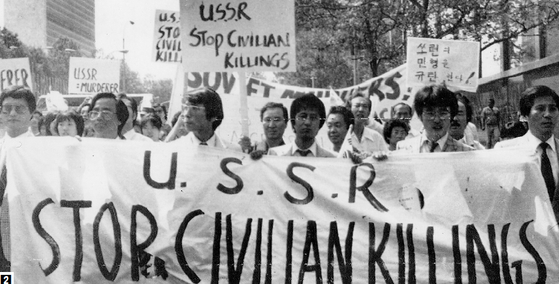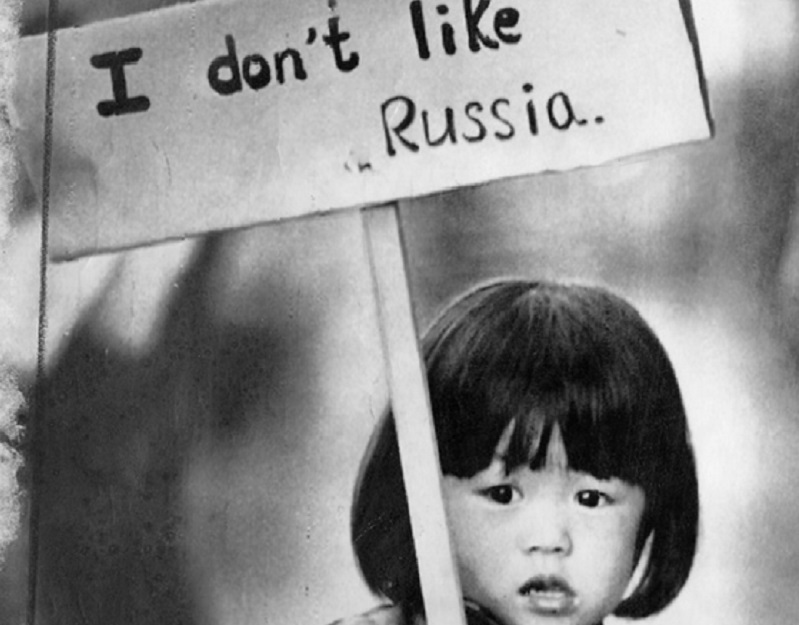Good morning! It’s Tuesday, September 5. I am sure you had a pleasant Labor Day holiday. Forty years ago, on September 1, 1983, a Soviet fighter jet downed Korean Air Flight 007 with a missile. Surprisingly, there seems to be a notable absence of memorial services or commemorations from the U.S. government, the South Korean government, or Korean Air. Even after four decades, the reasons for the Soviet Union’s missile attack on a civilian airliner remain a mystery.
Welcome to Katchup Briefing, the Korea Daily’s weekly English newsletter, where I’ll keep you informed with the latest news updates and perspectives from the Korean American community. If you want to explore more articles and columns from previous weeks, please visit koreadailyus.com.

Forty years ago, on September 1, 1983, a Soviet fighter jet shot down Korean Air Flight 007 with a missile.
The flight, which departed on September 1 from New York’s John F. Kennedy International Airport in the United States and was bound for Gimpo International Airport in South Korea via Anchorage, was brought down over Moneron Island near Sakhalin. The attack was carried out by a Sukhoi-15TM fighter jet, belonging to the then Soviet Union (USSR) Air Force, leading to the tragic loss of all 269 lives on board.
The aircraft carried passengers from 16 nations, including the crew. Among them were 81 South Koreans and 62 Americans, including Congressman Lawrence Patton McDonald. Disturbingly, none of the 269 bodies or their belongings were returned to their grieving families.
Surprisingly, as September 1 approached this year, there was an absence of reports regarding any memorial services or commemorations held by the U.S. government, the South Korean government, or Korean Air to mark this somber occasion. After four decades, the reasons behind the Soviet Union’s missile strike on a civilian airliner remain unanswered.
The incident involving the shooting down of KAL Flight 007, wherein a Soviet fighter jet targeted an unarmed civilian airplane, resonated as a shockwave through South Korea and the Western world. The impact was so profound that South Korea declared three days of national mourning starting on September 2, with flags lowered to half-mast.
The gravity of that day is crystallized in a presidential statement archived at the Ronald Reagan Presidential Library:
NOW, THEREFORE, I, RONALD REAGAN, President of the United States of America, in tribute to the memory of the slain passengers of Korean Air Lines Flight 007, and as an expression of public sorrow, do hereby appoint Sunday, September 11, 1983, to be a National Day of Mourning throughout the United States.

The incident occurred during a pinnacle of the Cold War, characterized by heightened tensions between the United States and the Soviet Union. The two superpowers were embroiled in an intense military confrontation and espionage rivalry concerning Sakhalin. This environment led to the emergence of numerous conspiracy theories regarding the plane’s downing, including speculations of it being a U.S. spy plane, the passengers’ survival and their continued existence on Sakhalin.
Subsequent investigations by the UN’s International Civil Aviation Organization (ICAO) revealed that Captain Byung-In Chun, then 45, relied on a compass rather than an inertial navigation system (INS) for navigation. Nevertheless, the exact cause of the tragedy remains uncertain.
The black box flight recorder that was later handed over by the Russians was also found to be meaningless. The video provided by the Russians showed signs of tampering. The belongings of the victims were never returned.
Neither the United States nor the Soviet Union could conclusively resolve the matter, leaving the families as the ones who remember the day. Strikingly, even Korean Air itself seems to have forgotten the incident, as a spokesperson confirmed that no commemorative events were planned for its 40th anniversary.
Although the Russian government erected a memorial monument in Nevelsk, Sakhalin, on the 10th anniversary in 1993, its location was met with strong objections from the bereaved families. Since then, reports indicate that the monument has been neglected.
Forty years have passed and the tragedy is covered up. The families are still seeking the truth through websites like (rescue007.org).
It is imperative that both the U.S. and South Korean governments uncover the truth of this tragedy. A comprehensive fact-finding report regarding the shooting down of KAL Flight 007 should be compiled, accompanied by a memorial event. This event would honor the victims and their families, who remain without answers as to why their lives were lost, and would serve as a powerful reminder to prevent such tragedies in the future.
By Mooyoung Lee lee.mooyoung@koreadaily.com




